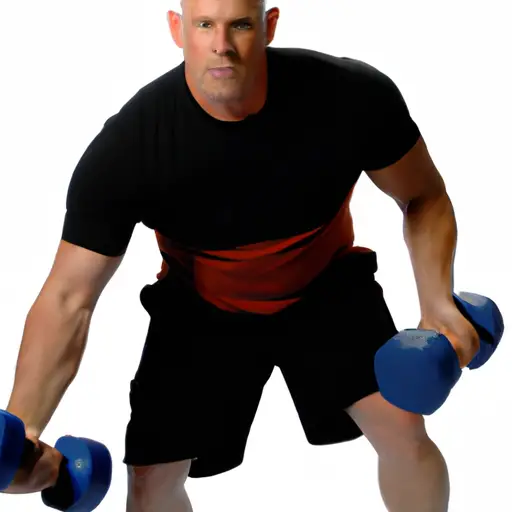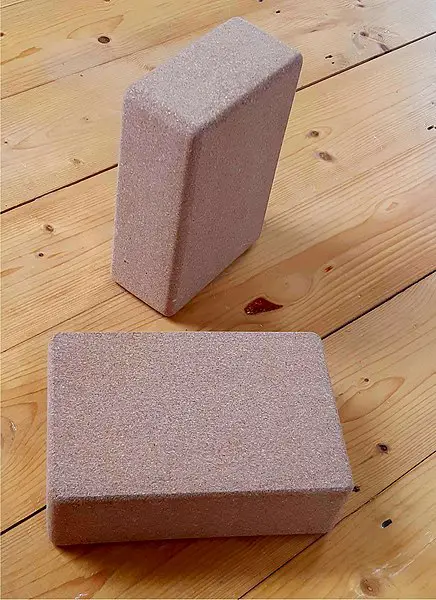The Power of HIIT Improving Cardio Health
Why HIIT Should be Part of Your Cardio Routine
Hey there, fitness enthusiasts! Lately, you might have heard a lot about HIIT or High-Intensity Interval Training. Let me tell you, it’s worth the hype! HIIT is a type of workout where you alternate between short bursts of intense activity and recovery periods. This type of training has gained popularity in recent times due to its numerous health benefits.
So, what are the benefits of HIIT on cardiovascular health? Well, research has shown that HIIT can improve your cardiovascular health immensely. It can help reduce the risk of chronic diseases like heart disease, diabetes, and stroke. Apart from that, it can also help improve your metabolism and reduce your stress levels.
Now, let’s dive into how HIIT exactly helps in improving cardiovascular health.
𝗛𝗼𝘄 𝗵𝗶𝗶𝘁 𝗶𝗺𝗽𝗿𝗼𝘃𝗲𝘀 𝗰𝗮𝗿𝗱𝗶𝗼𝘃𝗮𝘀𝗰𝘂𝗹𝗮𝗿 𝗵𝗲𝗮𝗹𝘁𝗵
Hey there, gang! Now that we’ve covered what HIIT is and how it benefits our cardiovascular health, let’s dive a bit deeper into how it actually does this magic. First up, we’ve got increased exercise efficiency. What does that mean? Well, essentially, HIIT is a type of workout that’s all about intensity, but in short bursts. Studies have shown that exercising at this high level of intensity for short periods can actually improve our overall cardiovascular endurance, allowing us to work harder and for longer periods overall. Another way in which HIIT can improve our cardiovascular health is through improved heart rate variability. This is a measure of how variable our heart rate is as we go about our day, and it’s been shown to be an indicator of overall health – the more variable, the better. HIIT workouts have been proven to increase heart rate variability, which in turn can lead to better overall cardiovascular health. Finally, we have enhanced blood flow and oxygen delivery. HIIT workouts require a lot of oxygen to be delivered to the muscles in a short period of time, which puts additional strain on our cardiovascular system. However, because we’ve been building up our cardiovascular endurance through HIIT workouts, our bodies are better equipped to handle this strain, resulting in improved blood flow and oxygen delivery overall. So there you have it, folks – HIIT isn’t just about getting a quick sweat on. When done correctly and consistently, it can have a profound impact on our cardiovascular health and overall well-being. Stick with it, stay consistent, and have fun!
3. Other Benefits of HIIT
Now, let’s talk about some of the other benefits of HIIT that you should know about.
Firstly, HIIT can improve your metabolism! This means that your body becomes more efficient at burning calories, even when you’re at rest. That’s right; you can burn calories while sitting on the couch!

Secondly, HIIT is perfect for those of us who feel stressed out all the time. HIIT has been shown to reduce stress levels and help you feel more relaxed. So, if you’re feeling overwhelmed by life’s challenges, try incorporating HIIT into your routine.
If you’re interested in starting HIIT, here are a few tips to help you get started:
1. Start slowly. If you’re new to exercise, start with just a few minutes of HIIT and gradually increase the length and intensity of your workouts.
2. Consistency is key! Try to do HIIT workouts at least 2-3 times a week to see the most benefits.
3. Monitor intensity. Make sure you’re pushing yourself during your HIIT workouts, but also pay attention to your body’s signals. If you feel like you’re pushing too hard, take a break or lower the intensity of your workout.
Overall, HIIT is definitely worth trying if you’re looking for a fun, challenging workout that offers tons of benefits for your cardiovascular health, metabolism, and stress levels. So why not give it a try and see for yourself?
4. Tips for Incorporating HIIT Into Your Routine
Hey guys, I’m here to share some tips on how to include HIIT into your workout routine. It can be tough to start a new exercise regimen, but with the right mindset and approach, it can be done.
a. Start Slowly
The key to starting a new workout routine is to take it slow. If you jump into high intensity interval training right away, you risk injury and burnout. Start with just two or three HIIT workouts a week and gradually increase as you feel comfortable.
b. Consistency is Key
One of the most important factors in achieving success with HIIT is consistency. Make sure you’re committed to working out on a regular basis, whether that’s three times a week or every day. Set a specific time each day to work out and stick to it.
c. Monitor Intensity
HIIT workouts should be challenging but not too difficult. It’s important to monitor your intensity level during each set and make sure you’re not pushing yourself too hard. Remember to listen to your body and take breaks if needed.
Now that you have some tips, remember that HIIT isn’t for everyone. If you have any underlying health conditions, you should consult with your doctor before starting this type of workout. Get ready to see some amazing results and good luck on your fitness journey!
Conclusion: HIIT is the Way to Go!
Well, folks, that’s it! From all the research I’ve done and (believe me!) all the sweat on my shirt, I can confidently say that HIIT is the way to go when it comes to cardio health. It’s not just about getting fitter, leaner, and stronger. It’s about making your heart healthier and stronger, too.
If you’re looking to incorporate HIIT into your routine, my advice is to start slow and gradually increase the intensity. Consistency is key here. You don’t have to do HIIT every day, but doing it regularly will help you see the benefits.
Monitor your intensity, too, and make sure you’re not pushing yourself too hard. You want to challenge yourself, but not to the point of injury or burnout. Oh, and one more thing: if you want to get the most out of your HIIT sessions, make sure to fuel your body properly with nutrient-dense foods and hydrate before and after your workout.
Remember, cardio health is not just about the number on the scale or how fast you can run a mile. It’s about taking care of your heart, which is one of the most important muscles in your body. So, if you want a healthy heart, start incorporating HIIT into your routine. Your heart will thank you for it!
Cardio Fitness FAQ
What are the benefits of HIIT high-intensity interval training?
Wowzers, let me tell you about the benefits of HIIT!
First off, HIIT is a great way to improve your cardio health. It gets your heart pumping and blood flowing, making you feel energized and refreshed. Plus, HIIT has been shown to reduce the risk of heart disease, stroke, and high blood pressure. So not only does it make you feel good, it’s also good for your overall health!
Another awesome benefit of HIIT is that it can help you burn more calories in less time. By doing short, intense bursts of exercise followed by brief periods of rest, you can increase your metabolism and torch fat. Plus, HIIT workouts can be done in as little as 20 minutes, making them perfect for busy people who don’t have a lot of time to spend at the gym.
Lastly, I want to mention that HIIT can help improve your endurance and stamina. By pushing yourself to your limits during these intense workouts, you can train your body to handle tougher physical challenges. This can translate to better performance in athletic activities, as well as increased energy and strength for everyday tasks.
Overall, HIIT is a fantastic way to improve your cardio health, burn calories, and build strength. It’s a challenging but rewarding workout style that can help you reach your fitness goals. So why not give it a try? Your body will thank you!
What are the benefits of interval training for cardiovascular fitness?
Well, let me tell you, high-intensity interval training, or HIIT, is an awesome way to boost your cardiovascular fitness. It involves short bursts of intense exercise followed by brief periods of rest or recovery. In my experience, this method has really helped me improve my heart health. One of the main benefits of HIIT is that it can help you increase your endurance and stamina. By challenging your body in short intervals, you’re forcing it to work harder than it would during steady-state cardio, which can typically become mundane and repetitive. By pushing your limits with HIIT training, your cardiovascular system will gradually become more efficient at delivering oxygen to your muscles, thus improving your overall exercise performance. Moreover, HIIT can help you burn more calories in less time compared to steady-state exercise. When you perform high-intensity intervals, your body has to work harder to recover and return to its resting state. As a result, you’ll burn more calories both during and after your workout, making it a time-efficient and effective way to improve your cardiovascular health. Additionally, HIIT can help reduce your risk of developing chronic diseases like diabetes, high blood pressure, and obesity. By elevating your heart rate and exerting yourself anaerobically, you stimulate metabolic pathways that can improve insulin sensitivity, promote fat loss, and decrease inflammation throughout the body – all important factors in maintaining good cardiovascular health. Overall, HIIT is a great way to improve your cardiovascular fitness, endurance, and overall health. By incorporating high-intensity intervals into your workout routine, you’ll be able to challenge your body in a way that steady-state cardio cannot, and reap some serious benefits in the process. So go ahead and give it a try!
the benefits of high-intensity interval training (hiit) for improved cardio health
Wow, let me tell you, HIIT is the real deal! As someone who has struggled with cardio health in the past, I have seen firsthand the incredible benefits of incorporating HIIT into my fitness routine. First and foremost, it has drastically improved my cardiovascular endurance. By pushing myself to my limit during each interval, I am able to increase my heart rate and expand my lung capacity, leading to overall improved cardio health.
Additionally, HIIT has helped me burn more calories, even after my workout is over. This is due to the EPOC effect, which stands for excess post-exercise oxygen consumption. Essentially, HIIT causes your body to continue burning calories long after you’ve finished your workout. It’s like getting a bonus calorie burn!
But perhaps most impressive is the fact that HIIT can have a positive impact on cholesterol levels. Studies have shown that just a few weeks of HIIT can lead to a decrease in LDL (bad) cholesterol and an increase in HDL (good) cholesterol. This is incredibly important for long-term heart health.
Overall, I cannot recommend HIIT enough for those looking to improve their cardio health. It’s challenging, yes, but the benefits are absolutely worth it. Plus, you can customize your intervals to fit your fitness level and personal goals. So what are you waiting for? Give HIIT a try and see the results for yourself!






